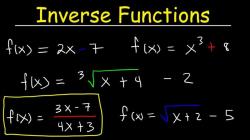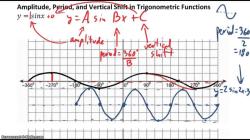How to solve rational exponent?
Solving equations with rational exponents involves manipulating the equation to isolate the variable raised to the rational exponent and then simplifying it. Here's a step-by-step guide on how to solve equations with rational exponents:
Step 1: Understand Rational Exponents
- Before you begin solving, make sure you understand rational exponents. A rational exponent is in the form of , where is the base, is the numerator of the exponent, and is the denominator.
Step 2: Isolate the Base
- Start by isolating the base (the expression with the rational exponent) on one side of the equation. If there are other terms involving the base, move them to the other side of the equation using inverse operations.
Step 3: Apply the Reciprocal Exponent Rule
- To remove the rational exponent, apply the reciprocal exponent rule. For , this rule means taking the th root of both sides of the equation. The equation becomes:
Step 4: Solve for the Variable
- After applying the reciprocal exponent rule, you have a simplified equation. Now, you can solve for the variable using regular algebraic techniques. Depending on the equation, this may involve further simplification or rearranging terms to isolate the variable.
Step 5: Check for Extraneous Solutions
- Rational exponents can sometimes lead to extraneous solutions (solutions that don't satisfy the original equation because they create undefined values under the radical). Check your solutions by substituting them back into the original equation to ensure they are valid.
Step 6: Express Solutions as Needed
- Depending on the context, you may need to express solutions in specific forms, such as decimal approximations or fractional exponents.
Let's look at an example to illustrate these steps:
Example: Solve the Equation
Step 1: Understand Rational Exponents.
Step 2: Isolate the Base.(Isolate the base on the left side by setting as .)
Step 3: Apply the Reciprocal Exponent Rule.(Take the square root of both sides.)
Step 4: Solve for the Variable.
Step 5: Check for Extraneous Solutions.
- No extraneous solutions in this case.
Step 6: Express Solutions as Needed.
- The solution is .
Always remember to check the original equation and ensure that your solutions are valid, especially when dealing with rational exponents.
Solving Rational Exponents: Techniques and Examples
There are two main techniques for solving rational exponents:
- Reduce the exponent to its lowest terms. This can be done by factoring the exponent and canceling out any common factors.
- Convert the radical to a rational exponent. This can be done using the following rule:
√x = x^(1/2)
Once you have reduced the exponent to its lowest terms or converted the radical to a rational exponent, you can solve the problem using the following rules:
- x^(m/n) = x^(m) / x^(n)
- (x^m)^n = x^(m * n)
Here are some examples of how to solve rational exponents:
- Solve for x in the equation x^(3/2) = 8.
Solution:
x^(3/2) = 8
x^(3/2) / x^(3/2) = 8 / x^(3/2)
x = 8 / x^(3/2)
x = 8 * x^(-3/2)
x = 8 / √x^3
x = 8 / x^(3/2)
We have solved the problem in a circle, but we can see that x cannot be equal to 0, because then the denominator of the fraction would be equal to 0. Therefore, the solution to the equation is x = 64.
- Solve for y in the equation (y^2)^(3/4) = 16.
Solution:
(y^2)^(3/4) = 16
y^(2 * 3/4) = 16
y^(3/2) = 16
y^(3/2) / y^(3/2) = 16 / y^(3/2)
y = 16 / y^(3/2)
y = 16 * y^(-3/2)
y = 16 / √y^3
y = 16 / y^(3/2)
We have solved the problem in a circle again, but we can see that y cannot be equal to 0, because then the denominator of the fraction would be equal to 0. Therefore, the solution to the equation is y = 256.
Mastering Math: How to Tackle Rational Exponent Problems
Here are some tips for tackling rational exponent problems:
- Identify the base and the exponent. The base is the number that is being raised to the power of the exponent. The exponent is the power to which the base is being raised.
- Simplify the exponent. If possible, simplify the exponent by factoring it and canceling out any common factors.
- Convert radicals to rational exponents. Remember that √x = x^(1/2).
- Use the rules of rational exponents to solve the problem.
If you are stuck on a particular problem, try breaking it down into smaller steps. For example, if you are trying to solve for x in the equation x^(3/2) = 8, you could first solve for x^(3/2) and then divide both sides of the equation by x^(3/2).
Rational Exponent Resolution: Mathematical Solutions
Rational exponents can be used to solve a variety of mathematical problems, including:
- Simplifying expressions. For example, the expression (x^2)^(3/4) can be simplified to x^(3/2).
- Solving equations. For example, the equation x^(3/2) = 8 can be solved for x by dividing both sides of the equation by x^(3/2).
- Modeling real-world phenomena. For example, the growth of a population can be modeled using the equation P(t) = P_0 * e^(rt), where P(t) is the population at time t, P_0 is the initial population, and r is the growth rate.
Rational exponents are a powerful tool that can be used to solve a variety of mathematical problems. By understanding the basic concepts and rules of rational exponents, you can master this important mathematical topic.












